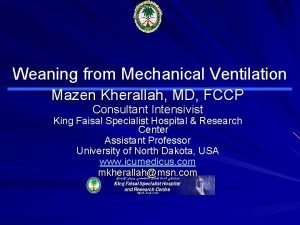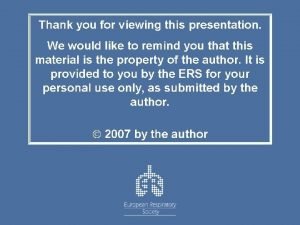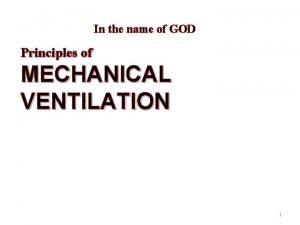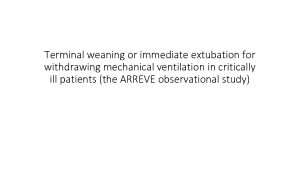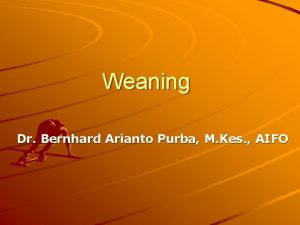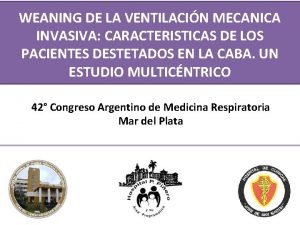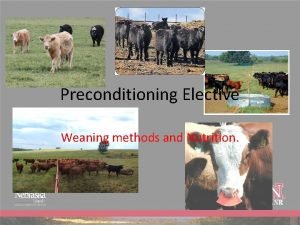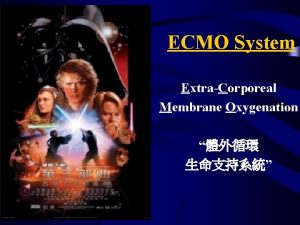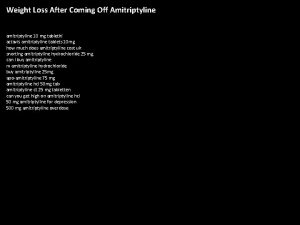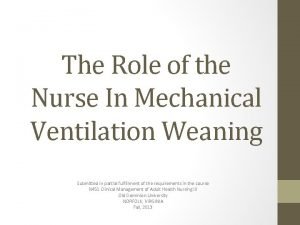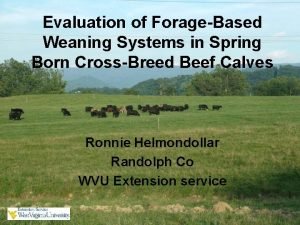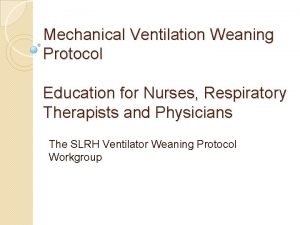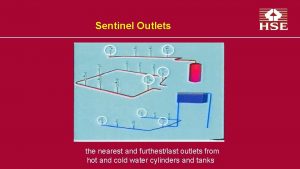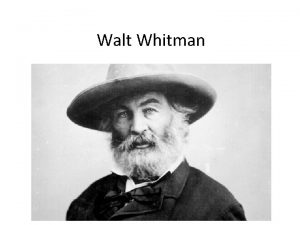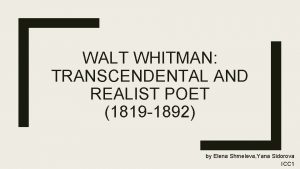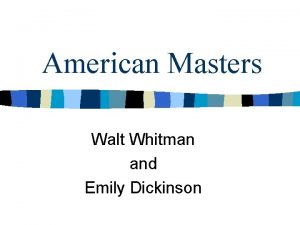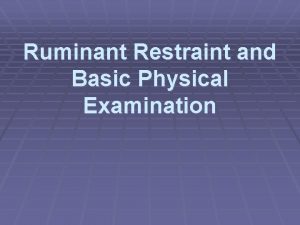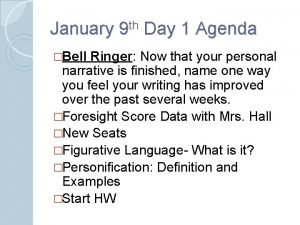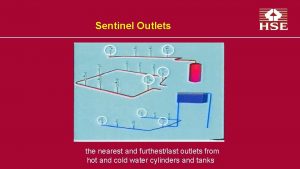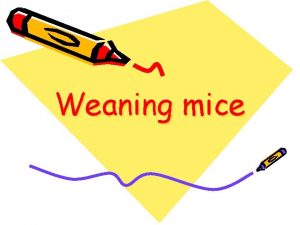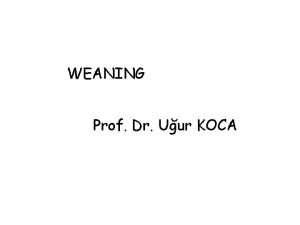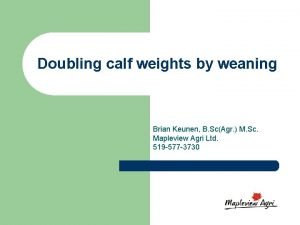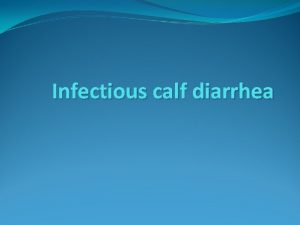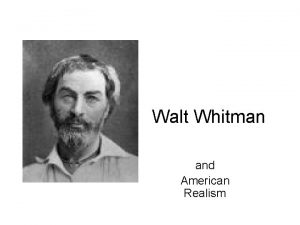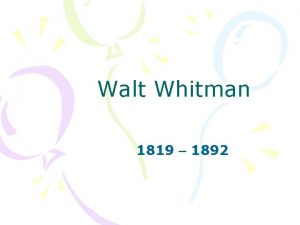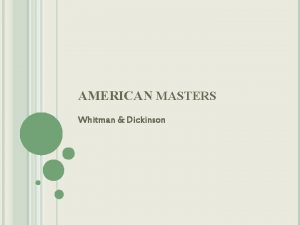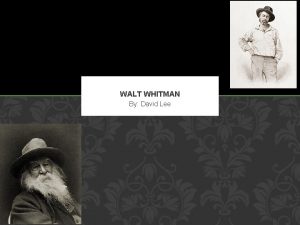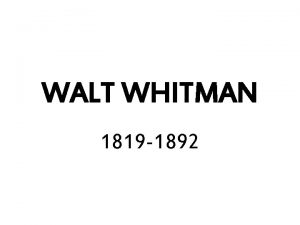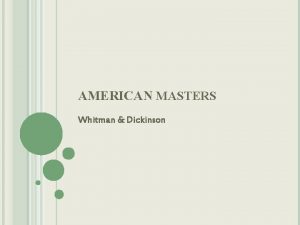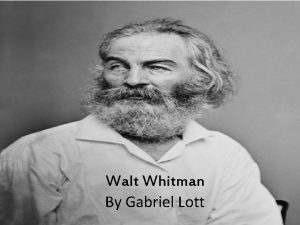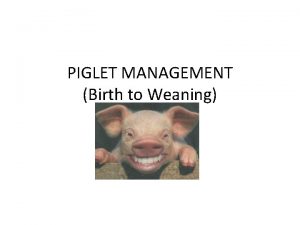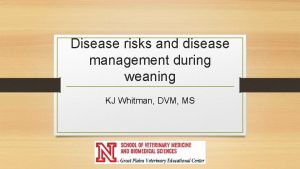Preweaned calf management and weaning outlets KJ Whitman





















- Slides: 21

Pre-weaned calf management and weaning outlets KJ Whitman, DVM, MS

Spring calving herds-beef cattle cycle • Calves removed from dam-methods? • About 6 months of agewhat determines? • About 4 -5 CWT • May be preconditioned • May be vaccinated, medicated at this time • What are the options for where this calf goes? Precalving Calving WINTER FALL SPRING Breeding Weaning SUMME R Branding

Overview of the (traditional) weaning process +/-PRECONDITIONING WEANING-VARIOUS METHODS • • REPLACEMENTS CONTRACTING ORDER BUYERS AUCTIONS/SALE BARNS RETAINED OWNERSHIP BACKGROUNDER/STOCKER • • COW HERD FEEDLOT HARVEST DRYLOT GRASS

Weaning methods • Immediate • Abrupt and movement away from home • Abrupt and stay at home • Fence-line • Nursing aversion tools

Common Diseases of Calves at Weaning • Respiratory • Upper and lower • Digestive • Nutritional/Dietary • Internal parasitism • Musculoskeletal/lameness • External parasitism

Immediate Weaning How it works • • Abrupt removal from dam +/- preconditioning Truck or stay at home Direct placement in feedlot, backgrounding/stocker operations • Heifer development Disease risk • Related to stress • +/- travel • Comingling • Trauma • Digestive disturbances

Fence-line Weaning How it works • Separate calf and dam by a fence • • line No physical contact or nursing, but presence Usually a period of 1 -2 weeks +/- preconditioning period Direct placement in feedlot, backgrounding/stocker operations Disease risk • Much lower stress • Similar diseases but lower risk • Digestive disease may be reduced if there is a transition diet present in weaning pasture

Nursing Aversion Tools How it works • Leave the calf with the cow • Apply temporary nose ring to calf that is uncomfortable for the cow: 4 -7 days • She refuses to let calf nurse, dries up, calf is weaned • +/- preconditioning, several handling steps, removal of nose ring at processing and movement to new environment Disease risk • Stress during handling periods, but perhaps smoother transition • Similar diseases

Determining Weaning Time/Age • Tradition • 5 -7 months of age • Aug-Nov in spring calving herds • Weather, pasture condition • Early weaning due to drought • Cow condition • Cows are thin, calf removal gives cows more time to recover • Marketing • Opportunities may dictate earlier or later weaning times • Replacement heifer needs, sales • Alternative methods • Leaving calves on cows through the winter-delayed weaning

Preconditioning How it works • Vaccination prior to separationusually 2 -3 weeks prior Disease risk • Better immunity at most stressful time point • At weaning: +/- vaccine booster • Similar disease risks, better management? • +/- Nutritional adjustments • Direct placement in feedlot, backgrounding/stocker operations

Post-Weaning Pathways: Direct to Feedlot • Calves are weaned • Young, lightweight, more risk • Placed on a truck • Shipped directly to feedlot-potentially contracted • Live or video auction market • Retained ownership • Handling and receiving diet is critical • Various strategies for reducing disease

Post-Weaning Pathways: Backgrounding/Stockers • Backgrounding: Dry lot/yards • Preparation for the feed lot and finishing period • Combines grazing, harvested forages with concentrate rations • Ideal for lighter weight calves (~400 lb) • Time period between entry into backgrounding situation to feedlot can vary

Post-Weaning Pathways: Backgrounding/Stockers • Stocker/Yearling operations • Similar or the same as “backgrounding” • May utilize grazed forages more • Supplemental feed requirements vary with forage availability and calf status • Lightweight calf preparation for feed lot: 700850 lb target weight • Time period: 3 -12 months • Modest gains primarily through grazing: 1 -2. 5 lb. per day

Replacement heifers • Selection of replacement females may occur before weaning or during backgrounding/stocker phase • Selection based upon: • Number needed • Weight/growth • Physical characteristics • FERTILITY? ? ? • Can manage with steer calves on grass or retain separately • May require additional vax?

Replacement Heifers • What role can a veterinarian provide?

Nutritional Management • Don’t Rock the (Rumen) Boat! • When do calves become ruminants? • Options: • Preconditioning-creep feeding • Backgrounding/stocker-transition diets • Entry into feedlot-receiving diets

Nutritional Management-Creep Feeding • Allows for more gradual dietary transition • Promotes the use of a bunk feeder • Decreases demands on dam? • Allows for administration of medication • Required in times of inadequate forage • Additional expense • May not give any growth advantage • Behavior issues? • Promote dietary disease earlier on? • Administration of feed-grade medication may be too late

Nutritional Management. Backgrounding/Stocker • Stress management through forage consumption • Familiarity • Utilization of pastures • Negative effects of nutritional stress are mitigated • Opportunity to train to bunk and waterers before feedlot entry • Allows for more growth and maturity • Physically and immunologically • Bigger into feedlot • Less time on feed, less efficient?

Nutritional Management-Receiving Diets • Calves • Yearlings • May vary depending on history • Primarily forage or forage-based TMR • Gradual transition from forage to • May vary depending on history • May be at higher risk for acidosis • Adaptation is still required concentrate ration GOAL=FEED EFFICIENCY

Weaning process review WEANING-VARIOUS METHODS +/-PRECONDITIONING • • REPLACEMENTS CONTRACTING ORDER BUYERS AUCTIONS/SALE BARNS RETAINED OWNERSHIP BACKGROUNDER/STOCKER • • COW HERD FEEDLOT HARVEST DRYLOT GRASS

Questions?
 Minute ventilation
Minute ventilation Simplified weaning index
Simplified weaning index Weaning parameter
Weaning parameter Terminal weaning vs immediate extubation
Terminal weaning vs immediate extubation Weaning oksigen
Weaning oksigen Weaning prolongado
Weaning prolongado China weaning fence
China weaning fence Ecmo cxr
Ecmo cxr Coming off amitriptyline weight loss
Coming off amitriptyline weight loss Principles of weaning slideshare
Principles of weaning slideshare China weaning fence
China weaning fence Weaning ventilation
Weaning ventilation Sentinel outlets meaning
Sentinel outlets meaning Radial circuits
Radial circuits Tritech medical
Tritech medical Half in plural
Half in plural Transcendentalism whitman
Transcendentalism whitman Walt whitman realism poems
Walt whitman realism poems American masters whitman and dickinson
American masters whitman and dickinson Houston calf scramble stall display
Houston calf scramble stall display Slidetodoc
Slidetodoc Velvet nosed calf
Velvet nosed calf
